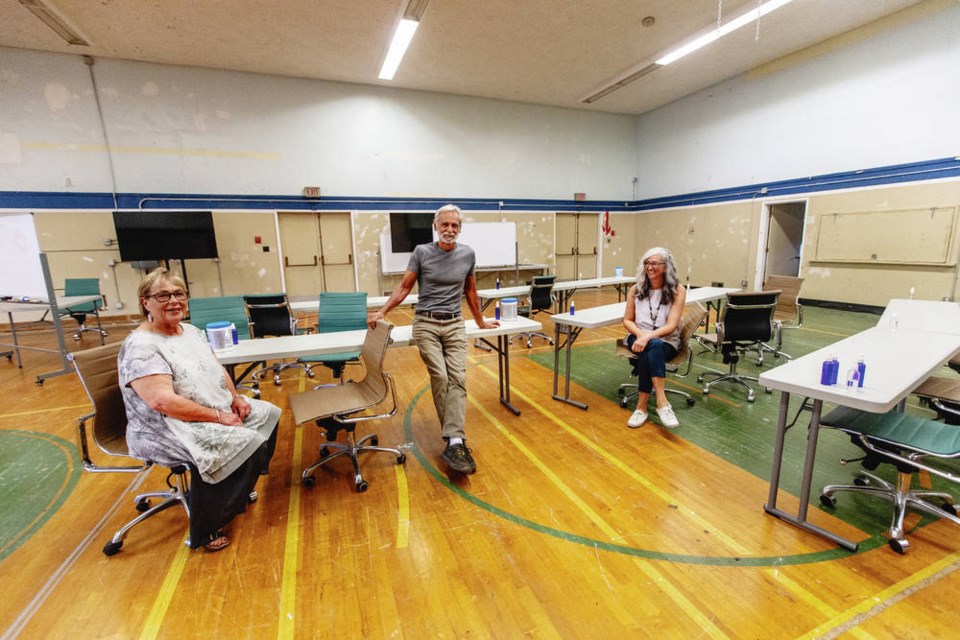Four years after stretching the municipal budget to buy a decommissioned school, the District of Metchosin will get its chance to reinvent the space as the community centre it envisioned in 2017 thanks to a $944,603 infrastructure grant from senior levels of government.
“This is actually huge for us,” said Metchosin Mayor John Ranns, noting the district only brings in about $2 million annually in taxes.
Ranns said the school, which sits across the street from municipal offices, was starting to feel a like a project that only a future council might be able to tackle.
“This is the biggest [grant] we’ve had,” he said. “This might help to convince a lot of residents that we didn’t make a big error in buying it. There have been a few sleepless nights over this one.”
Metchosin bought the elementary school — out of service since 2005 — in 2017 for $1.5 million. It has been “wrangling money for emergency repairs” ever since.
“It’s still fundamentally unusable, but this will make a huge difference,” said Ranns.
When it bought the 1914 building, the district envisioned an arts centre and community wellness centre.
“We will now be able to manage that,” said Ranns, noting they will also have disaster lodgings, a kitchen, community space and a chance to increase integration with the Beecher Bay First Nation.
In what could be a harbinger of a fall federal election, Metchosin’s grant was part of a $12-million announcement Tuesday — $10.3 million from Ottawa and $1.7 million from the province — to fund 21 projects on Vancouver Island that include active transportation, building renovation and infrastructure upgrades.
“These projects will create multi-purpose pathways and upgrade community buildings, which will enhance community connections and offer residents more reliable public infrastructure,” said Catherine McKenna, federal minister of infrastructure and communities.
The projects include bike paths and sidewalks in the Comox Valley, and renovations, including solar panels and a battery system, to a community centre and school building on the Mowachaht/Muchalaht First Nation near Gold River that will provide a safe gathering space during power outages.
“Improvements to the Mowachaht/Muchalaht Community Centre and school will help us respond better to urgent health and safety concerns,” said Chief Michael Maquinna. “Having this safe space will provide our community with the opportunity to be well prepared, ensuring access to health care and food during an emergency, while strengthening and supporting our people in a way that aligns with our traditional values.”
Sooke received a $1.8-million grant for its Otter Point Active Transportation Corridor Project, which includes construction of about 430 metres of sidewalks, 720 metres of bike lanes and crosswalks to provide a safe route for pedestrians and cyclists from Wadams Way to Highway 14.
Sooke Mayor Maia Tait said the grant will help build a low-carbon community. She asked residents for patience as it comes together.
“I know a lot is happening in our community. This activity is the result of the district’s efforts to leverage grant opportunities, maximizing residents’ tax dollars, and respond to the community’s needs for active transportation networks,” she said.
In a statement, Sooke said construction should be complete by November.
In Victoria, the Conservatory of Music received $364,452 to install no-touch fixtures and air purifiers as well as livestream and recording equipment, while the Pauquachin First Nation received $295,000 to renovate buildings to improve food security.
There was also $1.015 million to establish a buffered bike lane and sidewalk along a section of Metchosin Road, and $90,127 to upgrade the Drake Road trail.
Ranns said work on the old Metchosin school will start almost immediately, in the hope it might be finished in 2022.
“But for what we want to achieve, we still need to be really careful on how we spend it,” he said, noting that could mean the project takes a bit longer as the district ensures it gets the most bang from its buck.
To bring the old building back into service — there are tenants using some of the classrooms — will require interior and exterior lighting, doors, windows, a heating, ventilation and air-conditioning system, new floors, and repairs and improvements to the stage, lighting and sound in order to support the arts and culture sector.
“It’s been a dream for a long time to have a 200-seat community theatre,” Ranns said. “This will fill a gap. It’s needed, from what I hear.”



